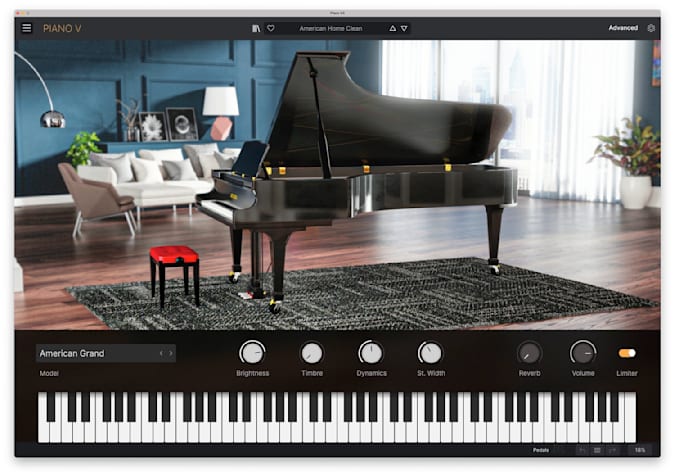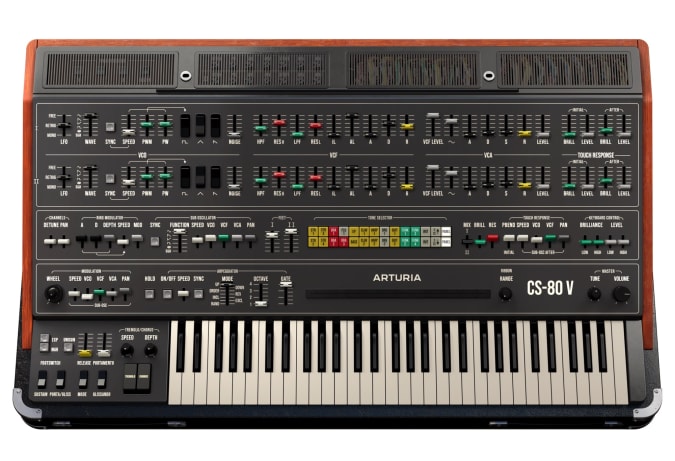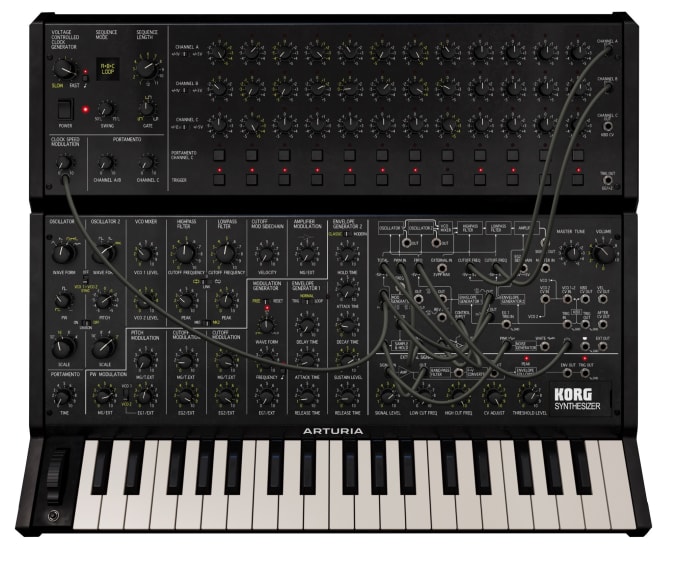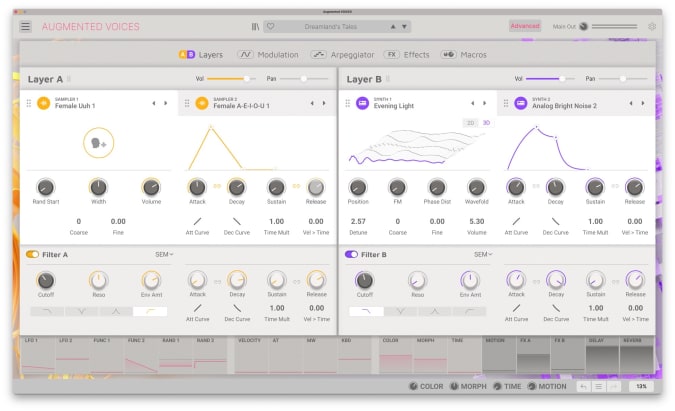Arturia’s V Collection is 9 here, and along with it several new instruments that make it a worthwhile upgrade. And, if you haven’t jumped on the VCollection yet, now might be the ideal time since it’s available at an intro price of $499. For the money, you get 32 instruments, covering everything from realistic pianos, to vintage synths and unique hybrids under the augmented banner.
All the previous instruments are here: CS-80, Synth AKSCasio CZ-1, Mellotron M400, Fairlight CMI, Yamaha DX7, Buchla Easel, ARP 2600Roland Jupiter 8, Minimoog, Moog Modular, Moog Vocoder, Oberheim Matrix 12 and SEM, Sequential Prophet 5 and Prophet VS, Juno-60E-MU Emulator II, Solina String, Synclavier, Hohner Clavinet, Fender Rhodes, Wurlitzer 200A, Hammond B3, Farfisa Compact, Vox Continental and an acoustic piano.
Arturia
Several of those plugins have been rebuilt from the ground up, though, including the CS-80 and acoustic piano. The UI for the piano plugin has been completely overhauled to place the instruments in a room context. Honestly, I’m not sure how I feel about it. It might help you find what you’re looking for with visual cues, but it feels like a bit of a distraction. The most important difference in Piano V and CS-80 V, though, is in how they respond to your playing. Both seem to react to subtle shifts in velocity better and have been given a volume boost; they always seemed a bit quiet when compared to other instruments in the collection. The differences can be subtle at times, but there’s no denying the new versions just sound better. The advanced controls of both also got revamps, with a load of powerful new modulation tools being added to CS-80 V in particular.
Arturia
The Prophet V has also gotten a major overhaul. Most notably, it’s now been separated out into two separate plugins: one for the Prophet 5 and one for the Prophet VS. Frankly, it makes sense, and it was always sort of odd that they were both shoved into a single VST.
The rebuilt plugins also have a bunch of new presets that showcase the improvements to their sound engines. While V Collection has a wealth of sound design tools for you to tinker with, the 14,000 presets (including nine new banks) honestly cover a lot of ground. You’d be forgiven for largely sticking with what comes pre-made. That said, if you’re mostly a preset player, I recommend saving yourself some money and sticking with Analog Lab.
Arturia
In addition to these updates there are four instruments that are new to the V Collection this year. SQ80 V has already been available for sometime, it’s just now part of the bundle. I spilled quite a few words fawning over it when it launched in September, and I’m not going to rehash everything here. Just know that it’s a delightfully lo-fi 8-bit wavetable synth. So if you’re into that sort of thing, you should be excited.
The MS-20 V is an emulation of Korg’s renowned MS-20. It is a beast of a bass synth and Arturia has done a commendable job of capturing its thick, brash tones. It even has an easy to navigate, drag-and-drop patching interface complete with the ability to get a feedback loop going. There’s a drop-down sequencer with three channels of CV modulation available. After spending 20 minutes with the MS-20 V, I kinda want to go start an industrial band.
Arturia
The biggest additions to the family, though, are definitely the Augmented Voices and Augmented Strings. We already got a taste of Strings a few weeks ago when Arturia launched the Intro version for free. But the one included in the V Collection is far more robust. The core UI and sounds are all the same, but the addition of an Advanced tab give you complete control over the instrument. You can swap in samples or synth engines, dial in separate envelopes for each of the four layers, and choose whatever effects you want. If your whole thing is cinematic sound design, the Augmented series will probably pique your interest.
Augmented Voices follows the same basic formula as Strings: Combine four layers (two sample and two synth) to create unique blends of acoustic and artificial textures. The twist is that, instead of using string and orchestral sound, Augmented Voices uses, well, voices. Choirs and soloists get processed and smashed up against various synth engines to create everything from ’80s-inflected synthpop arpeggios to guttural wails for your next Hans Zimmer tribute. The results in Augmented Voices are a little less compelling if you ask me, but it’s still great to see Arturia try something new and bring something other than emulations of vintage synths to the V Collection.
Arturia
Arturia’s V Collection 9 is available now through June 5th for $100 off (or more, if you happen to be an existing Arturia customer). After that, though, the price goes back up to $599, but even then it’s still a pretty decent bargain for 32 best-in-class virtual instruments.
All products recommended by Engadget are selected by our editorial team, independent of our parent company. Some of our stories include affiliate links. If you buy something through one of these links, we may earn an affiliate commission.




